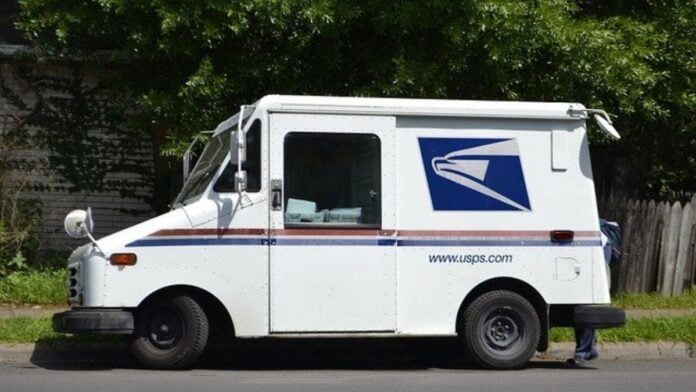Want to grab some quick information regarding USPS and the next generation delivery vehicle? You have landed in the right place, as we will get you covered. After several years of competitiveness, the United States Postal Service (USPS) released its first e-mail bus. The new mail truck can be equipped for both gasoline and electric powered trains and designed by Wisconsin-based defence contractor Oshkosh. But until 2023, it will not reach the street.
The awarding of the usps contract workhorse by Oshkosh is a possible big blow to the start-up of a commercial electric vehicle company, Workhorse. After the announcement, the stock price of the firm collapsed, and trade stopped several times.
Many of these usps truck contract – called “long-life vehicles” or LLVs – have gone well past their expiry dates, and some have also shot, not only risky but also expensive for USPS truck repair and maintenance. Also, modern facilities such as airbags or air conditioning are not available. They sell new vans, enhanced ergonomics, and new security features.
Both USDP and Oshkosh declared a modern car to be “fuel-efficient” and “low emission” with a gas and electric model. Initially, however, they did not decide the combination or how these words would be specified.
In addition to the aid to the USBC, Oshkosh is planning to add “fuel-efficient low-emission indoor combustion engine vehicles” to the deal for hybrid battery-electric mail carriers.
The following statement examines electric vehicles’ advantages, including letter and parcel distribution for last millet, USPS internal governance, and USPS’ financial difficulties. It defines three policy measures that the Congress or the Biden Administration might take to level the procurement field—while isolating the bidding mechanism and maintaining the USPS’s autonomous position, enabling USPS to select its NGDV in line with comparisons of life cycle cost costs. These activities could connect a huge hole in the all-EV plans of the administration otherwise.
Features of Next Generation Delivery Vehicle
Smaller carbon footprint
The NGVs will rock battery-powered engines or internal combustion engines for better fuel economy, as officially known. In principle, the company’s thirty-year-old variant of Grumman LLV now has an estimated fuel saving of seventeen miles per gallon. USPS authorities have stated that they plan to have a major electric fleet by the end of the decade.
Better road safety
It might not be that risky to drive a mail truck when you remember all the children, motorbikes, and runaway pets that postal carriers need to escape on their roads. The updated cars include the back-up camera, three hundred sixty-degree cameras, and blind-spot sensors for improved protection for both passengers and footballers on the side view mirrors. Auto parking brake and sensors for front and rear bumper can help prevent further malfunctions.
More room for Amazon packages
USPS trucks have seen a nineteen percent increase in parcel delivery and an eleven percent drop in mail delivery between 2019 and 2020. Most may be tied up to retail pandemic habits, but the department believes it to be a long-term development. The next-generation vehicles will have a space for a payload that exceeds UPS, FedEx, and the Amazon Prime vans to cater to an onslaught of commercial carriages. No more squeezing of mail carriers’ cramped window openings.
Weather-proofed
Were you aware that there are no air conditioners in the new Postal Service delivery trucks? (They have central heat, but according to people at work, it is not reliable.) The Oshkosh Defence has a cooling mechanism that works off the motor, allowing carriers to pick up a chill in the most difficult summer weather. No news on how all season and all-terrain tires are updated.
Key points
The new mail trucks will accept delivery duties for most Americans known boxy white trucks.
Aging trucks
The one million forty thousand Lorries – officially known as Grumman Long Life Vehicles – require a substitute. They do not have important features, including air conditioning, airbags, or blocking brakes. They are not enough to suit the e-commerce parcels that constitute today’s majority of the mail. They also passed the predicted life expectancy with an average age of around twenty-eight years.
The postal services are so ancient that it is difficult to hire car technologists who are aware of their fixes. From 1987 to 1994, Grumman constructed them.
The old trucks made of aluminum are also susceptible to burn. About one hundred twenty have burnt, including twenty-two this year, in the last five years.
Competing teams
Four teams divided between seven car manufacturers compete with new customized lorries to replace the engines. In March, tests were made on two dozens of prototypes. The trials were about three times longer than predicted by the USPS.
If a certain high-level award was won, years of effort could be validated and paid for by a producer with a multi-year contract. The workhorse group, a small non-profit electric truck company in one team, may also decide this company’s survival.
Companies that do not have US automotive plants now move to safeguard future facilities.
Looking for factory space
North America Mahindra Automotive has said it is hunting.
Also, the organization evaluates locations in many other countries, he added. By government filings, Mahindra offers gasoline or mild-hybrid powertrain alternative.
Karsan, Turkey’s electricity company, is partnering with a long-term USPS Morgan Olson provider of Sturgis’s Michois district. It has announced with this organization a range of financial and industrial arrangements. The team has offered a new mail truck with a plug-in hybrid motor option.
Workhorse and truck body manufacturer VT Hackney also examines where it will build whether the team gets a battery-electric truck contract.
In May, Workhorse named the preferred purchaser for General Motor’s 6.4 million-square-foot Lordstown assembly complex to be a consortium headed by company founder Steve Burns. It will cost three hundred million dollars to buy and renovate the factory.
U.S. assembly plants are now in place in the fourth team, specialty truck and tactical vehicle manufacturers, Oshkosh Corp, Wisc. and Ford Motor Co., Dearborn, Mich. Ford. They used a Ford Transit freight van to base their internal combustion engine entry.
Production proposal requests
At the end of this year, the Postal Service will send production plans to the involved firms.
A new round of competition will be launched in the development proposal process and will often last longer than anticipated.
Before the latest mail trucks enter the road, there are other obstacles.
The money is one. The Post Office is losing cash. The Postal Service said that certain expenses arise with Congressional legislation requiring the agency to finance its employees’ pension payments at higher than necessary rates.
The USPS’s financial statements for the third quarter of 2019 show a decrease in its package and volumes in a warning sign for the Department. That was the first decrease in nine years over the past year: slightly increased packages and distribution income. If giant consumers, including FedEx, UPS, and Amazon, switch other packages to their networks, this could change.
Technology worries
Another challenge is the rapidly moving vehicle technologies. Critics and the USPS fear the Department might become a stagnant forum for the current truck concept. The Department is now investigating self-supporting vehicle technologies for its mail vehicles, meaning that the mail truck makers would need a potential option.
The organization has meanwhile confirmed that the current sticker is not the only way to grant a deal.
This would facilitate the competition for costlier options such as hybrid trucks or electric motors. It could cost more at an early stage. But because of reduced fuel bills and servicing requirements, they can have a lower service life than a diesel engine.
Conclusion Next Generation Delivery Vehicle
Energy is fundamental to the two hundred thirty years of engineering experience of USPS. The history is usually defined in terms of the changing modes of transport promoted and used by the USPS to send mail: pony, stagecoach, locomotive, truck, and aircraft. However, it can also be used as a change of water sources: workforce, power supply, steam, internal combustion, turbine jet.






